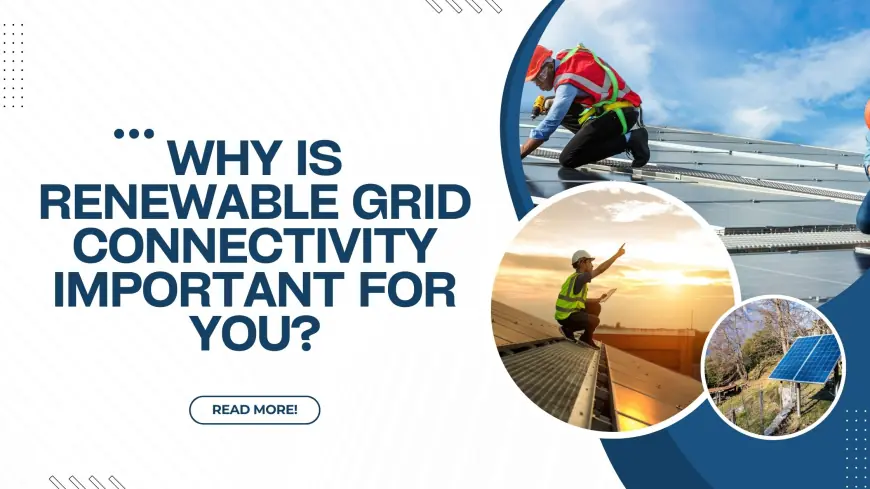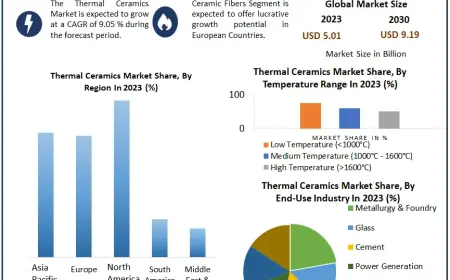Why Is Renewable Grid Connectivity Important for You?
Renewable grid connectivity is not just about energy efficiency—it’s about securing a sustainable future. As India advances towards clean energy.

With the world shifting towards sustainable energy solutions, the importance of renewable grid connectivity has never been greater. Whether you are a homeowner, business owner, or part of a large industrial unit, understanding how renewable grid connectivity impacts your daily life is crucial. But what exactly is it, and why should you care? Let's explore the significance of integrating renewable energy into the grid and how it benefits you directly.
What Is Renewable Grid Connectivity?
Renewable grid connectivity refers to the seamless integration of renewable energy sources like solar, wind, and hydropower into the national power grid. It ensures that electricity generated from green sources is efficiently distributed and utilized, reducing dependency on fossil fuels.
Key Components of Renewable Grid Connectivity:
-
Smart Grid Technology: Optimizes energy flow and demand-supply management.
-
Energy Storage Solutions: Batteries and pumped hydro storage help manage surplus power.
-
Grid Modernization: Enhances infrastructure to handle variable renewable energy sources.
-
Distributed Energy Resources (DERs): Enables localized energy generation and consumption.
Why Should You Care About Renewable Grid Connectivity?
1. Lower Energy Costs
Integrating renewable energy into the grid helps stabilize electricity prices. With the cost of solar and wind energy decreasing, grid-connected renewables reduce reliance on expensive fossil fuels, ultimately lowering your electricity bills.
2. Enhanced Energy Security
A well-connected renewable grid reduces power outages and ensures a steady electricity supply. Unlike fossil fuels, renewable energy is locally available and less affected by geopolitical tensions, making it a more reliable energy source.
3. Reduced Carbon Footprint
By supporting renewable grid connectivity, you contribute to a cleaner environment. Fossil fuel-based power generation is a major contributor to air pollution and greenhouse gas emissions. Switching to a renewable-powered grid significantly reduces carbon emissions.
4. Job Creation and Economic Growth
The renewable energy sector is a major driver of job creation. From manufacturing solar panels types maintaining wind farms, integrating renewables into the grid fosters employment and strengthens the economy.
5. Support for Electric Vehicles (EVs)
A robust renewable energy grid supports the growing electric vehicle market by ensuring clean energy availability for EV charging stations. This promotes a sustainable transportation system and reduces reliance on petroleum-based fuels.
Challenges in Renewable Grid Connectivity
Despite its numerous benefits, integrating renewables into the grid comes with challenges:
-
Intermittency Issues: Solar and wind power generation depends on weather conditions, requiring efficient energy storage solutions.
-
Grid Stability Concerns: Fluctuating renewable energy supply can cause voltage and frequency instability.
-
Infrastructure Upgrades: Many existing grids need modernization to handle decentralized energy sources.
-
Regulatory and Policy Barriers: Government policies and incentives play a crucial role in accelerating adoption.
How Hartek Group Is Leading the Change
Hartek Group is at the forefront of renewable grid connectivity in India. With expertise in power system solutions, solar energy, and grid infrastructure, Hartek ensures seamless integration of renewables into the power network.
Hartek’s Key Contributions:
-
Smart Grid Solutions: Advanced grid management to enhance efficiency.
-
Renewable Energy Integration: Large-scale solar and wind energy projects.
-
Energy Storage Solutions: Cutting-edge battery storage systems for reliable power supply.
-
Grid Infrastructure Modernization: Upgrading existing systems to support renewables.
By collaborating with industries, utilities, and policymakers, Hartek Group is shaping a future where clean energy is accessible to all.
Future of Renewable Grid Connectivity in India
India is on a mission to achieve 500 GW of renewable energy capacity by 2030. With increased investments in smart grids, energy storage, and regulatory reforms, the future of renewable grid connectivity looks promising. As more individuals and businesses embrace clean energy, the power landscape of India will become greener and more sustainable.
Conclusion
Renewable grid connectivity is not just about energy efficiency—it’s about securing a sustainable future. As India advances towards clean energy, embracing grid-connected renewables benefits everyone, from households to industries. With pioneers like Hartek Group leading the transformation, a cleaner and greener energy future is within reach.
FAQs
1. What is renewable grid connectivity?
Renewable grid connectivity refers to the integration of renewable energy sources like solar and wind into the national power grid to ensure a stable and sustainable electricity supply.
2. How does renewable grid connectivity benefit me?
It helps lower energy costs, reduces power outages, decreases carbon emissions, supports electric vehicles, and creates job opportunities.
3. What are the challenges of renewable grid connectivity?
Key challenges include energy intermittency, grid stability issues, infrastructure upgrades, and regulatory barriers.
4. How is Hartek Group contributing to renewable grid connectivity?
Hartek Group provides smart grid solutions, energy storage, grid modernization, and renewable energy integration services to ensure a sustainable power supply.
5. What is the future of renewable grid connectivity in India?
India is focusing on achieving 500 GW of renewable energy capacity by 2030, with advancements in smart grids and energy storage ensuring a reliable clean energy transition.
What's Your Reaction?
 Like
0
Like
0
 Dislike
0
Dislike
0
 Love
0
Love
0
 Funny
0
Funny
0
 Angry
0
Angry
0
 Sad
0
Sad
0
 Wow
0
Wow
0


















































